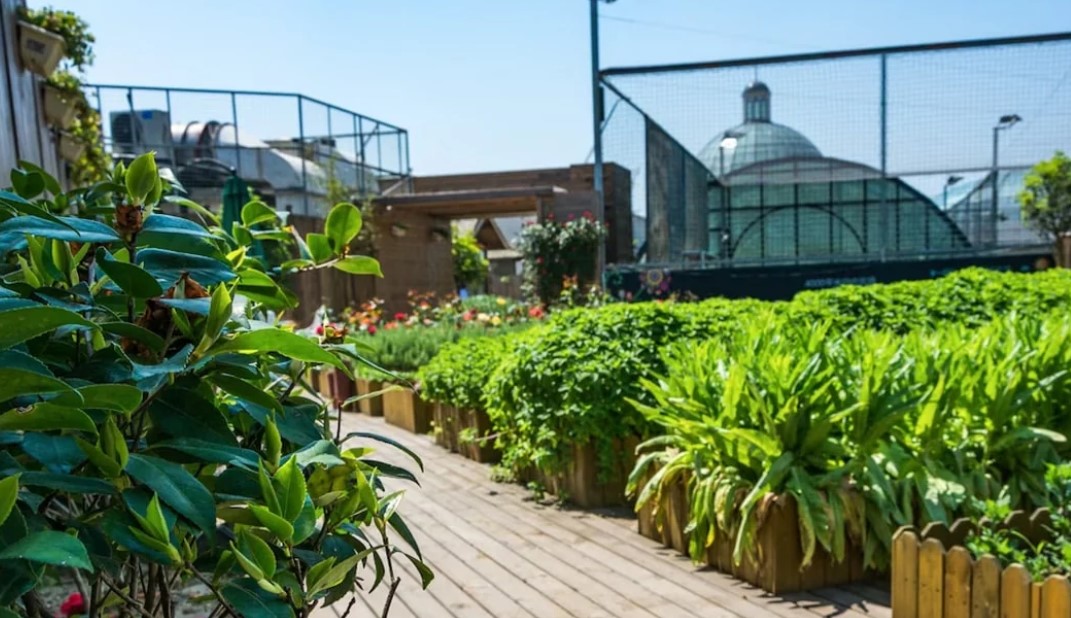Creating an urban garden at home is a rewarding way to bring nature into your living space, improve air quality, and enjoy fresh, home-grown produce. Even with limited space, urban gardening can thrive with the right techniques and creativity. Here are some effective tricks to cultivate a flourishing urban garden.
Maximize Space with Vertical Gardening
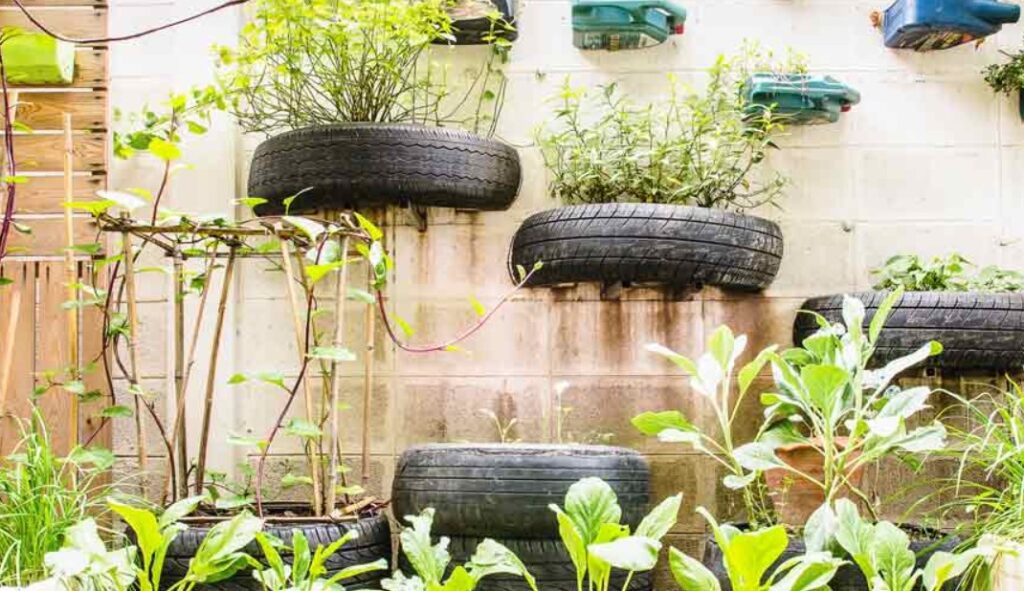
Utilize Walls and Fences
Vertical gardening is an excellent way to maximize limited space. Utilize walls, fences, and trellises to grow climbing plants like tomatoes, cucumbers, and beans. Hanging planters and wall-mounted pots are also great options for herbs and flowers.
Stackable Planters
Stackable planters allow you to grow multiple layers of plants in a small footprint. These are perfect for patios, balconies, or any small outdoor space. They provide excellent drainage and make harvesting easy.
Choose the Right Plants
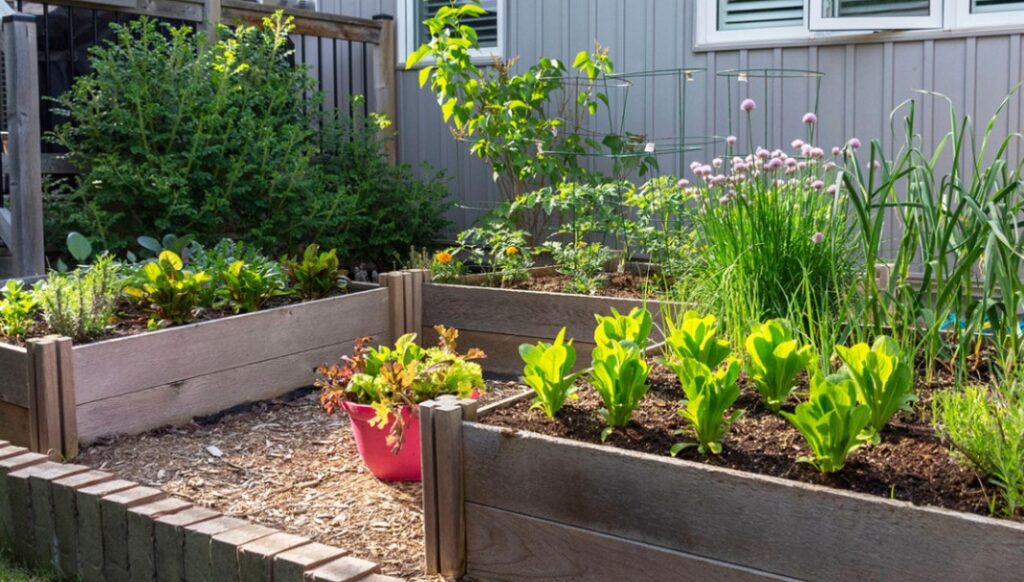
Compact Varieties
Opt for compact or dwarf varieties of plants that are bred to grow in smaller spaces. Herbs like basil, mint, and thyme, as well as vegetables like cherry tomatoes, bush beans, and lettuce, are ideal for urban gardens.
Succession Planting
Practice succession planting to maximize yield. Plant fast-growing crops like radishes and leafy greens in succession every few weeks. This ensures a continuous harvest and makes efficient use of space.
Optimize Light Conditions
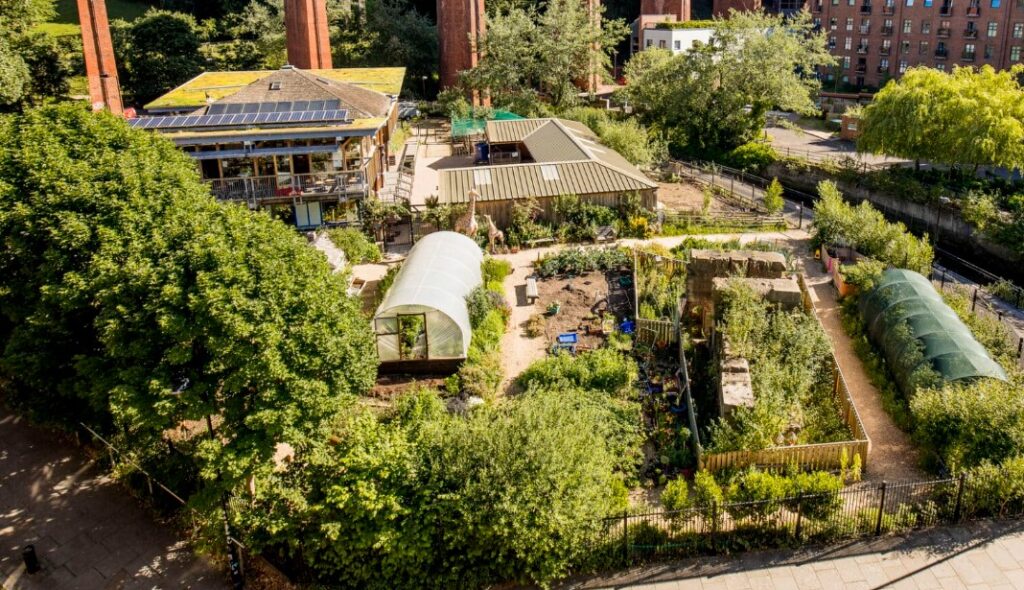
Optimizing light conditions is crucial for the success of an urban garden, especially when space and sunlight can be limited. Proper light exposure ensures that plants thrive and produce healthy yields. Whether you’re gardening on a balcony, rooftop, or indoors, here are effective strategies to optimize light conditions for your urban garden.
Understand Sunlight Requirements
Sunlight Duration
Different plants have varying sunlight requirements. Some vegetables, herbs, and flowers thrive in full sun (6-8 hours of direct sunlight), while others tolerate partial shade (4-6 hours of sunlight) or even thrive in full shade (2-4 hours of indirect sunlight). Choose plants that match the available light conditions in your urban setting.
Sun Exposure Assessment
Observe the sunlight patterns in your garden area throughout the day. Note which areas receive direct sunlight and which are shaded by buildings, trees, or other structures. This assessment helps in selecting the appropriate plants and placing them where they will receive optimal light.
Strategic Placement of Plants
South-Facing Exposure
In urban environments, south-facing locations generally receive the most sunlight throughout the day. Place sun-loving plants such as tomatoes, peppers, and herbs that require full sun in these areas. Utilize window sills, balconies, or rooftops that face south for maximum light exposure.
East and West-Facing Exposure
Plants that can tolerate partial shade, such as leafy greens, lettuce, and some herbs, can be placed in east-facing areas to receive morning sun or west-facing areas for afternoon sun. These locations provide moderate light intensity, which is suitable for many edible plants.
Shade-Tolerant Plants
For areas with limited direct sunlight, consider shade-tolerant plants such as leafy greens (lettuce, spinach), herbs (mint, cilantro), and certain flowering plants (begonias, impatiens). These plants thrive in dappled light or indirect sunlight provided by taller buildings or trees.
Use of Reflective Surfaces
Maximize Light Reflection
Enhance light conditions by using reflective surfaces strategically placed around your garden. Mirrors, light-colored walls, or even aluminum foil can reflect sunlight onto plants, especially in shaded areas or corners where natural light is limited. This technique helps to amplify available light for optimal plant growth.
Supplemental Lighting Options
Grow Lights
In indoor or heavily shaded urban gardens, grow lights are invaluable for providing artificial light that mimics natural sunlight. LED grow lights are energy-efficient and come in various spectrums suitable for different stages of plant growth. Position grow lights above plants to supplement or replace natural light as needed.
Timed Light Exposure
Use timers to control the duration and timing of grow lights. Most plants require 12-16 hours of light per day for healthy growth. Timers ensure consistent light cycles, promoting robust plant development and flowering.
Adjustable Plant Placement
Seasonal Adjustments
In urban environments, sunlight availability can change with the seasons due to varying angles of the sun and changes in foliage density (e.g., deciduous trees shedding leaves). Monitor and adjust plant placement accordingly throughout the year to optimize light exposure based on seasonal changes.
Optimizing light conditions is essential for cultivating a successful urban garden. By understanding sunlight requirements, strategically placing plants, using reflective surfaces, and incorporating supplemental lighting options like grow lights, you can create an ideal environment for plants to thrive even in limited urban spaces. Embrace these strategies to maximize light efficiency and enjoy a flourishing garden year-round.
Efficient Watering Techniques
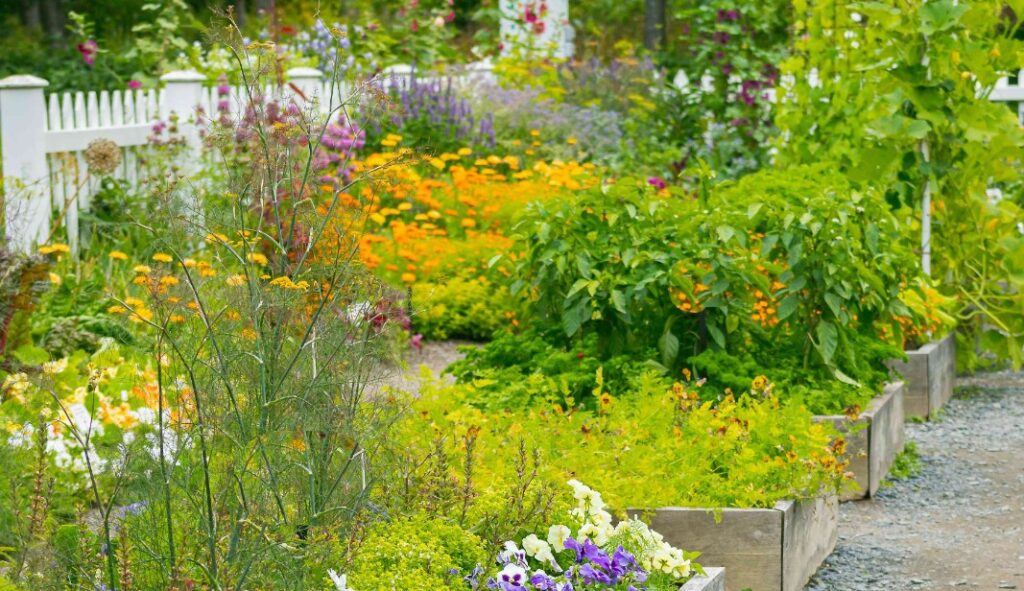
Efficient watering techniques are essential for maintaining a thriving urban garden, where water conservation and optimal plant health are priorities. Urban environments often present challenges such as limited water availability and variable weather conditions. By employing smart watering strategies, you can ensure that your plants receive adequate moisture while minimizing water waste. Here are effective techniques for efficient watering in urban gardens.
Choose the Right Watering Methods
Drip Irrigation Systems
Drip irrigation systems deliver water directly to the root zone of plants through a network of tubing and emitters. This method is efficient because it reduces water loss due to evaporation and runoff. Drip systems can be installed in raised beds, containers, and even vertical gardens, providing precise and consistent moisture to plants.
Soaker Hoses
Soaker hoses are porous hoses that ooze water along their length, delivering moisture directly to the soil. They are ideal for watering rows of vegetables, flower beds, and ground-level plantings. Soaker hoses conserve water by minimizing surface runoff and allowing for deep root penetration.
Self-Watering Containers
Self-watering containers have built-in reservoirs that provide a constant supply of water to plants. These containers prevent overwatering and underwatering by allowing plants to absorb water as needed through capillary action. They are particularly useful for herbs, vegetables, and flowers grown in containers on balconies or rooftops.
Optimize Watering Schedule
Morning Watering
Water plants in the morning to minimize water loss through evaporation during the heat of the day. Morning watering also ensures that plants have sufficient moisture to withstand hot temperatures and dry conditions.
Avoid Overwatering
Overwatering is a common issue in urban gardens. Monitor soil moisture levels regularly and water only when necessary. Use a moisture meter or check soil moisture by inserting your finger into the soil up to the first knuckle. If the soil feels dry, it’s time to water.
Mulching
Apply a layer of mulch around plants to conserve soil moisture and regulate soil temperature. Organic mulches such as shredded bark, straw, or compost help retain moisture, suppress weed growth, and improve soil structure over time. Mulching also reduces the need for frequent watering.
Water-Saving Techniques
Rainwater Harvesting
Collect rainwater in barrels or tanks to use for watering your garden. Rainwater is naturally soft and free from chemicals, making it ideal for plants. Install a rain barrel under a downspout or gutter to capture rainwater runoff from roofs.
Gray Water Recycling
Reuse gray water from household activities such as washing dishes or laundry to irrigate plants. Use biodegradable soaps and detergents and direct gray water to non-edible plants to minimize potential contaminants. Gray water recycling conserves freshwater resources and supports sustainable gardening practices.
Adjust Watering According to Plant Needs
Different plants have varying water requirements based on their species, size, and growth stage. Research the specific needs of each plant in your urban garden and adjust watering accordingly. Group plants with similar water needs together to simplify watering schedules and conserve water.
Monitor Soil Conditions
Regular Soil Checks
Regularly monitor soil conditions to ensure plants receive adequate moisture. Factors such as temperature, humidity, and wind speed can affect soil moisture levels. Adjust watering practices based on seasonal changes and weather patterns to maintain healthy plant growth.
Efficient watering techniques are essential for the success of urban gardens, promoting water conservation and supporting healthy plant growth. By choosing the right watering methods, optimizing watering schedules, implementing water-saving techniques like rainwater harvesting and gray water recycling, and monitoring soil conditions, you can create a sustainable and thriving urban garden. Embrace these strategies to maximize water efficiency and enjoy a flourishing garden in your urban space.
Use Quality Soil and Fertilizers
Soil Mix
Use a high-quality soil mix that is well-draining and rich in organic matter. Adding compost to your soil improves fertility and structure, providing essential nutrients for plant growth.
Organic Fertilizers
Opt for organic fertilizers to feed your plants. Compost tea, worm castings, and fish emulsion are excellent choices that promote healthy soil and robust plant growth.
Companion Planting
Mutually Beneficial Plants
Practice companion planting by pairing plants that benefit each other. For example, basil can repel pests that affect tomatoes, while beans can fix nitrogen in the soil, benefiting leafy greens.
Pest Control
Some plants, like marigolds and nasturtiums, can deter pests naturally. Incorporating these plants into your garden can reduce the need for chemical pesticides and promote a healthy ecosystem.
Creative Container Gardening
Repurposed Containers
Get creative with repurposed containers for your plants. Old buckets, crates, and even shoes can make unique and functional planters. Ensure they have drainage holes to prevent waterlogging.
Hanging Baskets
Hanging baskets are perfect for trailing plants like strawberries, herbs, and flowers. They save ground space and add a decorative touch to your garden.
Maintain a Healthy Garden
Regular Pruning
Regular pruning helps maintain plant health and encourages new growth. Remove dead or diseased leaves and thin out overcrowded areas to improve air circulation.
Monitor for Pests and Diseases
Keep an eye out for pests and diseases. Early detection and intervention can prevent problems from spreading. Use natural remedies like neem oil, insecticidal soap, or homemade sprays to manage issues.
Composting
Composting is a cornerstone of sustainable gardening practices, providing a nutrient-rich soil amendment that improves soil structure, fertility, and overall plant health. In urban environments, where space may be limited, composting offers an eco-friendly way to recycle organic waste and reduce reliance on synthetic fertilizers. Whether you have a small balcony garden or a rooftop oasis, here’s a comprehensive guide to composting in urban gardens.
Benefits of Composting
Nutrient-Rich Soil Amendment
Compost enriches soil with essential nutrients such as nitrogen, phosphorus, potassium, and micronutrients. It improves soil structure, enhances water retention, and promotes beneficial microbial activity, creating a healthy environment for plant roots.
Waste Reduction
Composting diverts organic waste from landfills, reducing greenhouse gas emissions associated with organic decomposition. By recycling kitchen scraps, yard trimmings, and other organic materials, you contribute to environmental sustainability and minimize waste disposal.
Cost Savings
Using homemade compost reduces the need for store-bought fertilizers and soil amendments, saving money in the long run. Composting is a cost-effective way to nourish your plants naturally and sustainably.
Getting Started with Composting
Choose a Composting Method
Bin Composting: Use a compost bin or container to hold organic materials. Bins are ideal for small spaces and urban settings. Choose a size and style that fits your needs, whether it’s a compact bin for a balcony or a larger bin for a rooftop garden.
Vermicomposting: Vermicomposting uses worms to break down organic matter into nutrient-rich castings (vermicompost). A worm bin can be kept indoors or outdoors, making it suitable for urban gardeners who want to compost kitchen scraps year-round.
Materials for Composting
Green Materials: Include kitchen scraps (fruit and vegetable peels, coffee grounds, eggshells), grass clippings, and fresh garden trimmings. These provide nitrogen and moisture to the compost pile.
Brown Materials: Add dry leaves, straw, shredded paper, and cardboard. Brown materials provide carbon and help aerate the compost pile.
Layering and Turning
Layer green and brown materials alternately in the compost bin to promote decomposition. Periodically turn the compost with a pitchfork or compost aerator to aerate the pile and accelerate decomposition. Proper layering and turning ensure even breakdown of organic matter.
Maintaining Your Compost
Moisture Levels
Monitor moisture levels in the compost pile. It should be damp like a wrung-out sponge, not too wet or dry. Water the pile occasionally to maintain proper moisture levels, especially during dry periods or hot weather.
Temperature and Airflow
Composting is an aerobic process that benefits from proper airflow. Ensure adequate ventilation in the compost bin or pile to facilitate decomposition. Optimal composting temperature ranges between 110°F to 160°F (43°C to 71°C), promoting efficient breakdown of organic materials.
Cultivating an urban garden at home is achievable and immensely satisfying with the right strategies. By maximizing space, optimizing light, using efficient watering techniques, and maintaining a healthy garden, you can enjoy a bountiful harvest even in a small urban setting. Embrace creativity and sustainability to create a thriving urban oasis.
